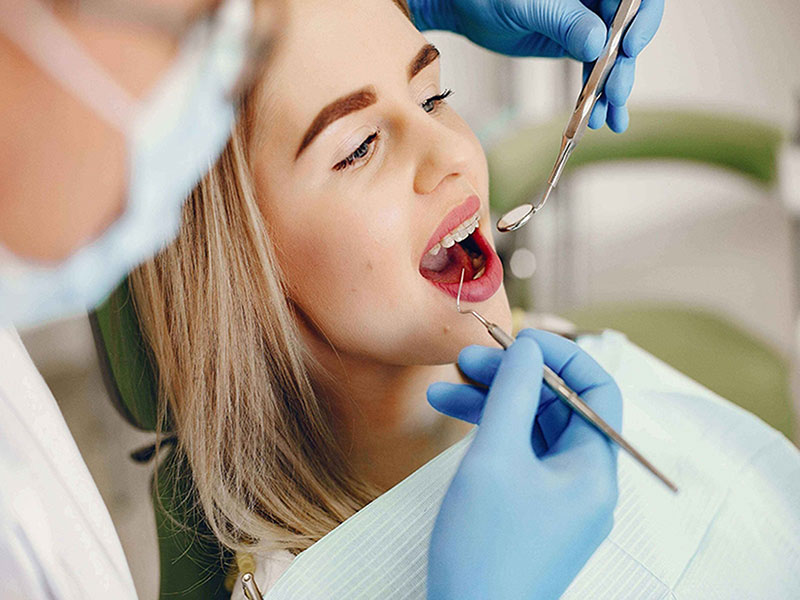Membrane Grafting in Dental Implants and Its Importance in Treatment Success
Membrane grafting is one of the key methods in improving the results of dental implants. This technique becomes particularly important in cases where there is insufficient jawbone to place the implant. The membrane graft acts as a biological barrier that helps prevent the growth of non-bone tissues in the graft area. This barrier allows the bone to grow effectively and ultimately leads to the success of the implant.
In addition, membrane grafting can help improve the quality of the bone where the implant will be placed. By using this technique, both soft tissue and bone can be utilized simultaneously, providing better conditions for implant placement. This is especially important in patients with a history of gum disease or jawbone resorption.
Ultimately, the success of dental implant treatment depends on many factors, but membrane grafting, as a complementary method, can significantly increase the chances of success. Given that this technique directly impacts the quality and quantity of the bone, it can be said that membrane grafting is one of the fundamental elements in the dental implant treatment process.
Effective Membrane Grafting Methods for Improving Dental Implant Results
There are various methods of membrane grafting that can help improve dental implant results. One of these methods involves the use of biological membranes made from natural materials such as collagen or organic membranes. These membranes are highly compatible with body tissues, are rapidly absorbed, and help improve the healing process.
Another method involves using synthetic membranes, which are typically made from specific polymers. These membranes, due to their ability to adjust thickness and physical properties, can be specifically designed for the needs of each patient. These types of membranes generally have greater resistance to pressure and tension, making them suitable for use in more challenging conditions.
Ultimately, the choice of the appropriate membrane grafting method depends on the specific condition of each patient. Consulting with the dentist and thoroughly assessing the bone and soft tissue status can help determine the best method. For example, in patients with severe bone resorption, it may be necessary to use both biological membranes and grafting materials simultaneously to achieve the best result.
Providing all specialized dental services, including implants, orthodontics, cosmetic dentistry, surgery, and specialized treatments for children at Dr. Damghanipour’s specialized dental clinic.

Benefits of Membrane Grafting in Dental Implants
Dr. Babak Damghani Pour, as one of the leading specialists in the field of dental implants, emphasizes the importance of membrane grafting. One of the main benefits of this technique is increasing the success rate of the implant. By using membrane grafting, bone growth in the desired area is facilitated, which helps improve the strength and stability of the implant.
In addition, Dr. Damghani Pour also highlights the aesthetic benefits of membrane grafting. By creating optimal conditions for bone growth, more natural results in the appearance of the teeth can be achieved. This is particularly important in cases where the front teeth are being implanted.
Ultimately, with Dr. Damghani Pour’s experience and expertise, patients can benefit from precise consultations and personalized treatment plans. This approach not only helps improve treatment outcomes but also leads to increased patient satisfaction. Given that each patient has unique conditions, membrane grafting can be considered an effective solution for achieving optimal results in dental implants.
In conclusion, membrane grafting, as a vital technique in dental implant treatment, not only helps increase the success rate of the implant but also plays a significant role in improving the aesthetic quality of the results. By using various methods of this grafting and consulting specialists such as Dr. Babak Damghani Pour, patients can benefit from the most optimal solutions to achieve natural and stable teeth. Ultimately, membrane grafting, as one of the main pillars in the treatment process, can guarantee success and patient satisfaction.
What is membrane grafting in dental implants and what is its purpose?
Membrane grafting is a surgical technique used in dental implants. This method helps protect the bone and soft tissues around the implant and accelerates the healing process and integration of the implant with the jawbone.
What are the benefits of using membrane grafting in dental implants?
The use of membrane grafting can have many benefits, including improving the quality and quantity of bone for implant placement, reducing the risk of infection, and strengthening the structure of the mouth and teeth.
Does membrane grafting have side effects?
Like any other surgical procedure, membrane grafting may also be associated with side effects. Mild symptoms such as swelling and bruising at the surgical site are common, but infection or allergic reactions may also occur.
How can success in membrane grafting be ensured?
To ensure the success of the membrane grafting, it is essential to follow hygiene guidelines carefully, have regular consultations with the dentist, and adhere to post-operative instructions. Taking care of the surgical area and avoiding negative factors such as smoking is also crucial.
Can everyone use membrane grafting?
While the membrane grafting technique may be suitable for many patients, specific conditions such as chronic diseases, the use of medications that interfere with the healing process, or certain dental conditions may prevent the use of this method. Consulting with a dentist to assess individual conditions is essential.
